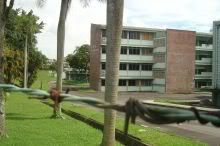Below are two letters written by Leong Sze Hian which was published in The New Paper on October 8 and Leonard Lee, which was sent to TOC.
 I REFER to the article, ‘Workers can’t lie down or sleep in ‘cage’ (The New Paper, 4 Oct).
I REFER to the article, ‘Workers can’t lie down or sleep in ‘cage’ (The New Paper, 4 Oct).
It states that ‘they were sent to the ‘cage’ as their bosses did not want them to be seen doing nothing at the dormitory during the day…the conditions are terrible as hundreds of them are squashed into a big room on the second storey of a former warehouse’.
What this story has highlighted is the dire need for proper housing of foreign workers.
I have been a resident of SerangoonGardens for the past 45 years.
Over the years, various houses along my street have housed foreign workers, and they have never caused any trouble.
They, in a way, add to the security of the estate, as they often while away time in the open until late at night, with open gates and doors.
This is, in my view, better than the deserted streets we have had after our estate upgrading a few years ago, which removed all the concrete benches outside every house.
No social interaction
SerangoonGardens, where streets used to be lively with children, maids and grandparents, became a ghost town, devoid of social interaction.
The problem is not foreign workers in Serangoon Gardens, but the concentration of an entire community, with talk of even a township to house them in the future.
It may be akin to putting a ghetto in the middle of Manhattan in the United States.
Property values may be affected as Serangoon Gardens is, I understand, Singapore‘s oldest residential housing estate.
I think what irks some residents, who may have refrained from airing their views publicly, is the principle of leading by example.
If the first large-scale foreign workers’ dormitory in a residential estate is, say, built in Bukit Timah, where I have been told many ministers live, Serangoon Gardens residents may not be as vehement in their objections
As a matter of principle, treating foreign workers as second-class residents, with additional fencing, labelling construction workers as a bigger security issue than manufacturing workers, may be an insult to their dignity.
Perhaps we should remember that throughout history, what is not good for foreign residents, may end up to be not good for citizens too.
Treat thy fellow men as equals, and I think all our problems may go away.
By sealing off the road access from Serangoon Gardens, and making access only from a new road from Ang Mo Kio, are we not in a sense, passing the buck to Ang Mo Kio residents?
———-
The following is a letter sent to TOC by Leonard Lee on the same issue.
Dear Editor,
I thought I’d send in my views on what I see as a creeping sense of intolerance amongst Singaporeans.
I have been following the Serangoon Gardens / Foreign workers saga closely and the last straw was on Monday when it was reported in the ST that the residents there
1) were concerned about the foreign workers having access to public spaces
2) wanted the compound fenced in
3) wanted the foreign workers bussed off on weekends to Bishan or Ang Mo Kio
The residents have failed to see that public spaces are exactly what they are – public – accessible to all, regardless of whether they are Singaporeans or not. The second point about the compound being “fenced-in” smacks of exclusion and elitism. The third point is galling – so what they do not see as
fitting for their own estate, they feel they can export to other neighbouring estates ?
Plans have been announced to assauge the concerns of the residents. My plea to Singaporeans is to be less intolerant and show some understanding. Please.
———-




